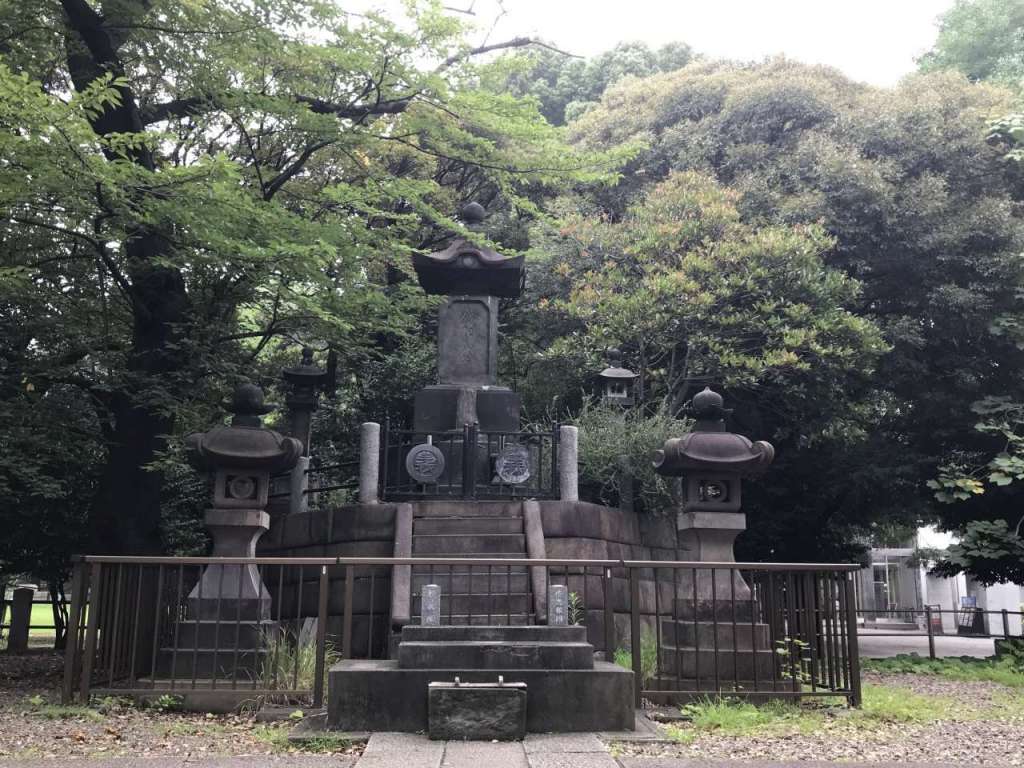“Tokyo Review 040” Ueno area-3
Kan’ei-ji Temple and the “The Battle in Ueno”
Kan’ei-ji Temple, the symbol of “Ueno Hill”, was constructed by Master Tenkai (a Buddhist priest of the highest order) who was said to be the counselor of Tokugawa Ieyasu. This construction had followed after the Hieizan Enryaku-ji Temple which had protected the direction of the demon gate of Kyoto. The temple became the Tokugawa shogun family’s Bodai-ji (official temple) after receiving the title of Toueizan. In the middle of the 17th century, it welcomed a chief priest from the imperial family and obtained great authority as the Tendai Sect Kanto Headquarters. Nearly the entire area of Ueno Park was once within the precincts of Kan’ei-ji, and the site area of it was up to 305,000 tsubo (about 100 ha). This was about twice as large as the Ueno Park. In the site of the Tokyo National Museum, which currently lies in the center of the Ueno Hill used to be the Kan’ei-ji Honbo (Main hall), and in the main fountain square on the south side of the museum used to be the Konpon -Chudo (main prayer’s hall).
This temple turned into the battlefield of “Shogitai Corps”, the rebellion by the Shogun’s elite, known as the Battle in Ueno at the end of the Edo period. In 1868, the year after the Restoration of Imperial Rule, the former shogunate army was defeated by the new government army in the Battle in Toba-Fushimi, and the last shogun Yoshinobu Tokugawa escaped from Osaka Castle and was harbored in Kaneiji Daiji-in in Ueno. The former shogun staffs who were dissatisfied with the transfer of power to the new government seemed to have formed an honorary corps named Shogitai and headed up the Ueno Hill. The number of soldiers reached 3,000 persons at maximum. In the midst of the disturbing movements, as the result of Takamori Saigo’s meeting with the Shogunate Army General Katsu Kaishu in March, the general attack toward Edo city was avoided in exchange for Yoshinobu’s imprisonment in Mito and bloodless release of Edo Castle ’s castle. However, in May, the new government army finally attacked the Ueno Hill where the former shogunate army was standing by.
Shogitai set up a headquarters near the Toshogu Shrine in Ueno Hill. The new government troops armed by new Armstrong Canons of Saga-han bombarded from Kaga-han’s Daimyo House in Edo (currently the site for University of Tokyo), across the Shinobazu Pond. Shogi Corps responded from Sannodai (currently the statue of Saigo Takamori stands there), but the one-day attack burned down the main buildings of Kaneiji’s including Konpon-Chudo, Shogitai Corps had almost wiped out and some remnants escaped to Aizu and Hakodate, and was finally annihilated at Goryokaku, and the series of wars were over. Even now, behind the statue of Takamori Saigo, there is the “Tomb of the Shogitai Corps”.
Now, the problem is how should the new government use this burnt field? That will lead to the next step.
